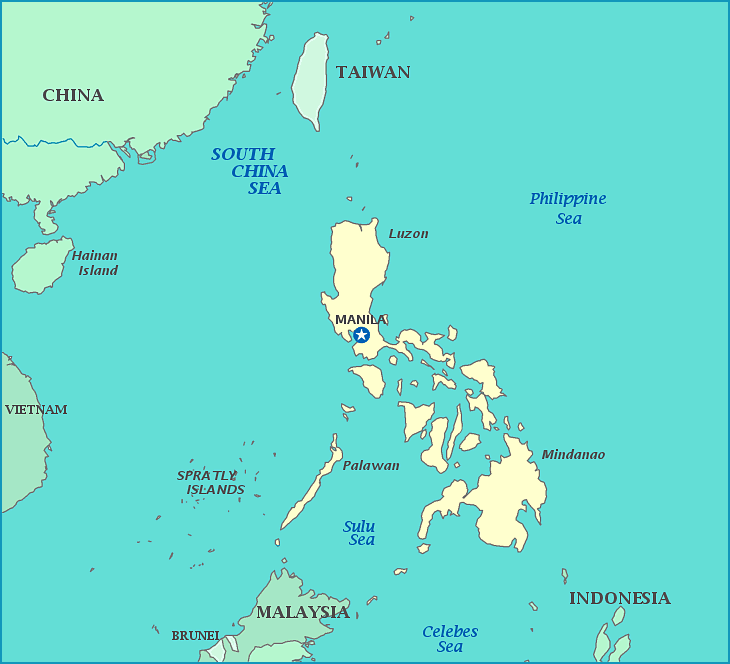
Quill's Quiz - 1100 Question US Mega Geography Quiz
Print this map of the Philippines US States and Capitals Map Quiz
Free Maps, Map Puzzles and Educational Software: Owl and Mouse Educational Software
Print this map of the Philippines US States and Capitals Map Quiz
Free Maps, Map Puzzles and Educational Software: Owl and Mouse Educational Software
The Philippines
Officially known as the Republic of the Philippines, the country lies south of Taiwan on the Pacific Ring of Fire and consists of 1,107 islands. This makes for a mega-diverse archipelago with a tropical maritime climate, prone to constant volcano eruptions, earthquakes, and typhoons. The islands are home to the Harpy Eagle, the largest eagle in the world. Deforestation is a major problem in the country; forest covered 70% of the country in 1900, but only 18.3% in 1999.
The country was named after King Philip II of Spain by explorer Lopez De Villalobos in the 16th century. Islam was introduced in the 14th century, CE, though this was met with violent resistance from the natives, who felt it would ruin culture and traditions. In 1521, Ferdinand Magellan landed at the islands and claimed them for Spain. He did not live to see it colonized in 1565 or the native uprising against the settlers put down in 1571. Colonization introduced many new foods and resources to Mexico, Spain, China, Japan, and the Philippines itself in 1565 via shipping routes. One route went from Spain to Mexico, to Manila and back; another went Manila to China, to Indonesia, to The Philippines, back to Indonesia, to India, around Africa, to South America and back. This put a huge burden on the Philippines to keep up with Spanish demand for galleons, but supplies sent from the Americas introduced new plants and animals across the entire route.
Criolla, a Spanish Filipino and many priests led a revolution against their imperial rulers in 1872. After the 1898 Treaty of Paris, the country was ceded to the US for 20 million dollars. The country declared independence in 1898, though the US refused to recognize the declaration, prompting the Philippine-American War. The Philippines were defeated, but were granted commonwealth status in 1935, which introduced women's suffrage.
Plans for again declaring independence were interrupted by WWII and invasion by Japan. The country declared independence once again, this time successfully, and became a founding member of the UN. Communists tried to seize power through fraudulent elections, but were driven out of the country. Democracy returned in 1986, though debt, corruption, coup attempts, natural disasters, insurgency, and protests hampered progress. The country played a major role in both Korean and Vietnam wars. Today, over 12 million Filipinos live overseas, most to seek slightly better wages and others to avoid political problems in the past.


